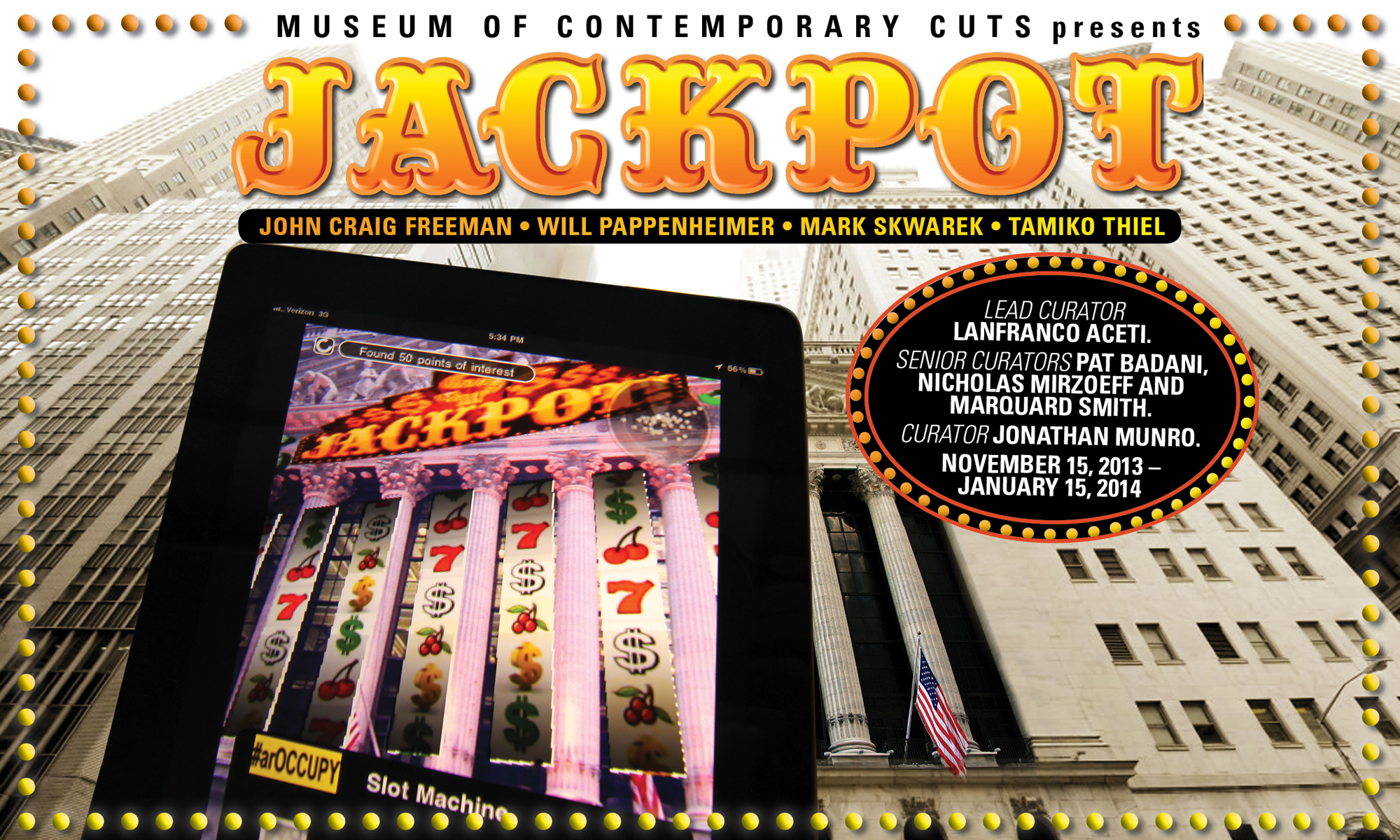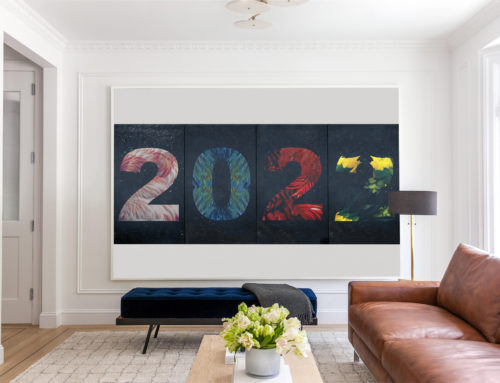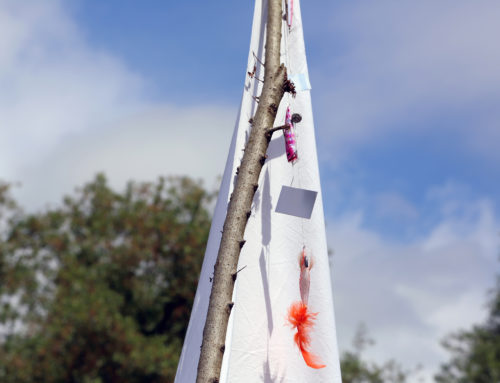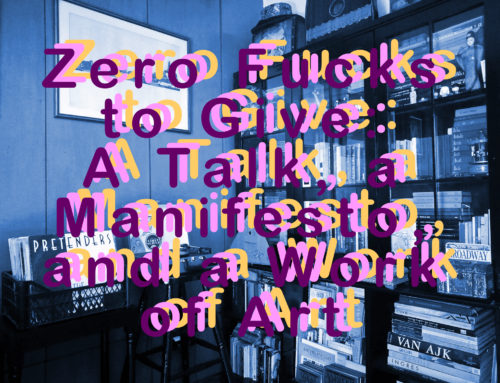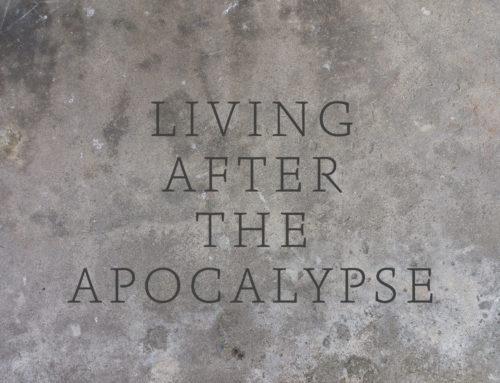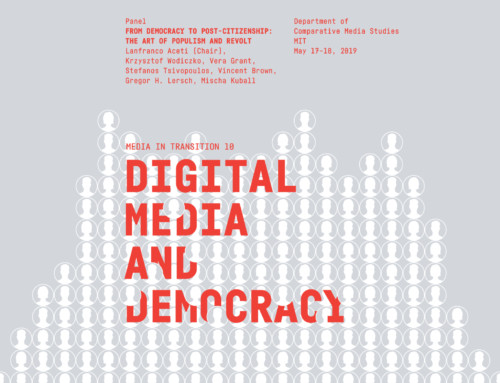Jackpot is an exhibition that, by analyzing the financial gambles of contemporary society, presents the loss of value of the traditional interpretation of the word social in favor of a re-interpretation of community and its rules by the nation state in a post-postmodern framework. In this context, the role of the state becomes that of a guarantor of a ‘skewed playing field’ arguably in favor of predatory lending, financial sharks and rapacious bankers.
Jackpot, inspired by Mark Skwarek’s artwork of the same name installed in Wall Street during Occupy Wall Street in 2012, refers to the phenomenon and underpinning ideology of ‘the winner takes it all.’ The artwork and the exhibition are a challenge to the current transformations, interpretations and globalized status of the American Dream within which there were – historically – multiple winners in a shared quest for upward social mobility. The exhibition argues that what remains of that ‘dream’ – now in financial tatters – is a single winner able to grab the whole of the jackpot, leaving everyone else to pay the tab for a game they will never be allowed to play.
Jackpot – as a symbolism of the absence of hope for the majority but one – questions the current state of democracy, seen as a post-democracy by Colin Crouch (Coping with Post-Democracy, 2000; Post-Democracy, 2004.) The profound alteration of the social balance makes intolerable the blurring between public riches and private riches skewed in favor of the very few. By layering the building of the New York Stock Exchange and virtually transforming it into a slot machine Mark Skwarek’s AR intervention Jackpot points to a game that is rigged from the very beginning; a game in which the house always wins.
In this context, post-democracy seems increasingly to represent a game – as in John Craig-Freeman’s Monopolistic Plutocrat in which plutocracy and plutocratic characters dominate the landscape and are rendered visible through the partial unmasking of technology.
In Tamiko Thiel’s Reign of Gold money seems to float but is impossible to grasp. The layer of the virtual money becomes a metaphor for the impossibility of the 99% grasping the gold. Real money becomes a distant dream, and while people can perhaps engage with the ‘fake’ money; the distance between the majority and the minority of those who have increasingly larger financial resources becomes sideral.
Will Pappenheimer’s First Occupy Wall Street Colony and We Need Something present the viewer with the need for transformative change; change that has to radically invest the behavior of the user and the technology itself. For instance, licking an iPhone screen to create colored toads obliges participants to look at their devices in a different manner. But this change is an aspiration and perhaps the last technologically romantic vision of an idea and definition of society that is slowly disappearing, creating a landscape of dramatic shifts and clashes.
Money, the American Dream, Democracy, Social Upward Mobility, all these notions become a wish upon a cloud… words in the air written in clouds of virtual codes that, when looked upon from afar, stand above the tensions, collisions and desperate abandonment of entire generations and societies around the globe.
The exhibition Jackpot at the Museum of Contemporary Cuts (MoCC) coincides with another show at Kasa Gallery titled I Occupy. Jackpot and I Occupy are a collaboration between MoCC, Kasa Gallery, OCR, Goldsmiths, NYU Steinhardt and the Royal College of Art.
Lead Curator: Lanfranco Aceti. Senior Curators: Pat Badani, Nicholas Mirzoeff and Marquard Smith. Curator: Jonathan Munro.
Exhibition Dates: November 15, 2013 – January 15, 2014.
Artists: John Craig-Freeman, Will Pappenheimer, Mark Skwarek and Tamiko Thiel.
Exhibition page: https://museumofcontemporarycuts.org/exhibitions/jackpot/
You can follow developments for Lanfranco Aceti Inc., OCR and the Museum of Contemporary Cuts (MoCC) via the newsletter.
ARTISTS’ BIOGRAPHIES
John Craig Freeman is a public artist with over twenty years of experience using emergent technologies to produce large-scale public work at sites where the forces of globalization are impacting the lives of individuals in local communities. His work seeks to expand the notion of public by exploring how digital networked technology is transforming our sense of place.
Freeman is a founding member of the international artists collective Manifest.AR and he has produced work and exhibited around the world including at the Los Angeles County Museum of Art, the San Francisco Museum of Modern Art, FACT Liverpool, Kunsthallen Nikolaj Copenhagen, Triennale di Milano, the Institute of Contemporary Art Boston, and the Museum of Contemporary Art Beijing, He has had work commissioned by the ZERO1, Rhizome.org and Turbulence.org. His work has been reviewed in The New York Times, El Pais, Liberation, Wired News, Artforum, Ten-8, Z Magazine, Afterimage, Photo Metro, New Art Examiner, Time, Harper’s and Der Spiegel. Christiane Paul cites Freeman’s work in her book Digital Art, as does Lucy Lippard in the Lure of the Local, and Margot Lovejoy in Digital Currents: Art in the Electronic Age. His writing has been published in Rhizomes, Leonardo, the Journal of Visual Culture, and Exposure.
Freeman received a Bachelor of Art degree from the University of California, San Diego in 1986 and a Master of Fine Arts degree from the University of Colorado, Boulder in 1990. He is currently a Professor of New Media at Emerson College in Boston. Freeman writes, “If Andy Warhol set out to create a distinctly American art form in the twentieth century, I identify with those who seek to create a distinctly global art form in the twenty-first.”
Will Pappenheimer is a Brooklyn based artist working in contemporary media art, performance and installation with an interest in institutional or spatial intervention and the altered meaning of things. His work often explores the confluence and tension of the virtual and physical worlds. His projects and performances have been shown internationally at LACMA, Los Angeles; the ICA, Boston; San Francisco MOMA; Stedelijk Museum in Amsterdam; FACT, Liverpool, UK; Kasa Gallery, Istanbul; Kunstraum Walcheturm, Zurich; Fringe Exhibitions in Los Angeles; the Museum of Fine Arts, Boston; Exit Art, Postmasters, and the New Museum in New York; the Corcoran Gallery of Art in Washington; the Golden Thread Gallery, Belfast; FILE, Sao Paulo, BR; Xi’an Academy of Art Gallery in China. As a founding member of the Manifest.AR collective, he has participated in two highly publicized interventions at the Museum of Modern Art, NY, 2010 and the 2011 54th Venice Biennial. The artist’s works have been reviewed in Christiane Paul’s recent historical edition of “Digital Art,” a chapter of Gregory Ulmer’s theoretical book “Electronic Monuments,” Art in America, New York Times, WIRED, Modern Painters, the Boston Globe, EL PAIS, Madrid, Liberation, Paris, and Art US. He teaches new media at Pace University, New York.
Mark Skwarek is an artist working to bridge the gap between virtual and physical worlds with augmented reality. His art explores the aesthetics of translation of our everyday digital experience into material and immaterial audience experiences through physical and mediated artworks. Skwarek is a full time faculty at NYU Polytech where he is the director of NYU’s Mobile AR Lab and is the CEO of the start up Semblance Augmented Reality. He organized the augmented reality artist group manifest.AR, the arOCCUPYWALLSTREET movement, and co-organized We AR in MoMA. Skwarek’s practice is also largely based in art activism with emerging technologies. He has a long record of international augmented reality work, ranging from “erasing” the DMZ battlements between North and South Korea (a piece he did on site), to the virtual elimination of the barricades between Palestine and Israel, at the Gaza Strip. He has created political works and symbols in a variety of locations across the United States, including pieces at Wall St., U.S. Mexico Border and the White House to name a few. Skwarek earned his M.F.A. from Rhode Island School of Design’s Digital Media Department. His artworks have been written about and reviewed by the New York Times, Art in America, Boing Boing, WIRED, the Boston Globe, The Huffington Post, NPR, BBC, Leonardo, and Creative Capital. Skwarek has exhibited in numerous international venues, including: the Institute of Contemporary Art, Boston; ISEA; Dumbo Arts Festival, UCLA Digital Grad Gallery; the CyberArts Festival; the Sunshine International Art Museum, Beijing; and the Krannert Art Museum at the University of Illinois, FACT in Liverpool England, Siggraph 2013, The 2013 Augmented World Expo, and The Corcoran Gallery of Art.
Tamiko Thiel (USA/DE) is a visual artist exploring the interplay of place, space, the body, cultural memory and identity. Her work is shown internationally in venues such as the Corcoran Gallery/Wa.DC, ICP/NY, ICA Boston, Harvard University, ZKM/Karlsruhe, Tokyo Metropolitan Museum of Photography, Art Gwanju, Ars Electronica, ISEA, Istanbul Biennale and SIGGRAPH. Her artworks have been supported by grants from the MacDowell Colony, MIT, WIRED Magazine, the Japan Foundation and the IBM Innovation Award. She is Visiting Artist at Duke University, and augmented reality artistic advisor for the CCCADI project “Mi Querido Barrio” in Spanish Harlem/NY, for which she helped win a Rockefeller Foundation grant. A founding member of cyberartist group Manifest.AR, she participated in the path breaking augmented reality intervention “We AR in MoMA” at MoMA NY in 2010, and was main curator and organizer of the AR intervention at the Venice Biennial in 2011.
Reviews of her work have appeared in publications such as Flash Art, Kunstforum, the New York Times, WIRED Magazine, El Pais and the Washington Post. Her work is discussed in reference books such as Whitney Museum media art curator Christiane Paul’s Digital Art (Thames and Hudson World of Art series), DAM gallerist Wolf Lieser’s The World of Digital Art and Cornell professor Matthew Smith’s The Total Work of Art: From Bayreuth to Cyberspace. Professor Smith also published a monograph on Thiel’s work, “Liquid Walls: The Digital Art of Tamiko Thiel,” in the Performing Arts Journal (PAJ).
She has been guest professor and lectured at institutions such as Carnegie Mellon University, the MIT Media Lab, Harvard University, the Bauhaus-University in Weimar/Germany, the University of Southern California School of Cinema-Television and the Berlin University of the Arts.

